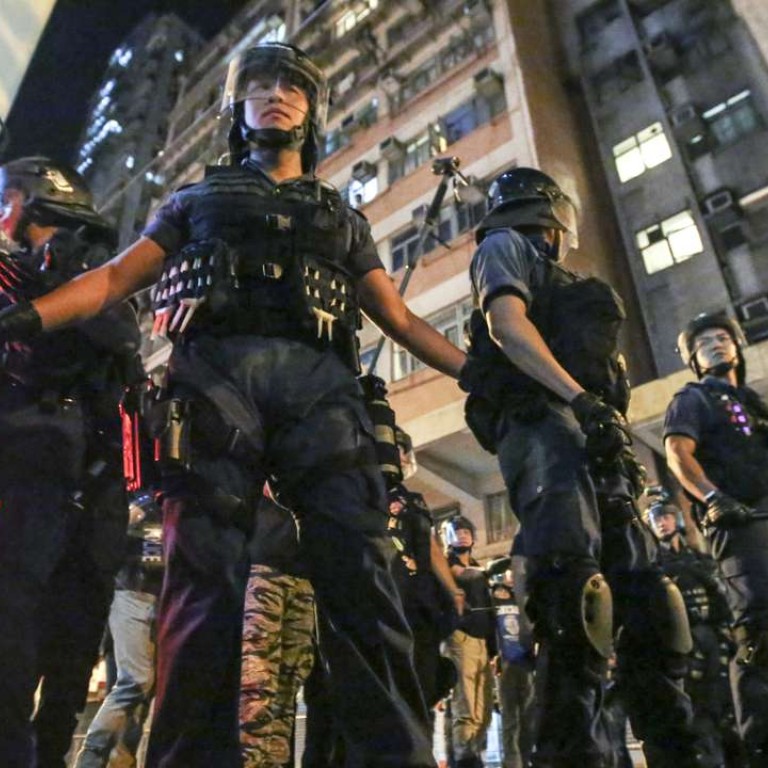
2,000 Hong Kong police ready round the clock as protests over Beijing’s ruling on Basic Law loom
Post learns force’s manpower enhanced after violent clashes overnight and additional concern following central government review of Legco oath saga
Some 2,000 police officers will be deployed round the clock this week to handle possible chaos following violence early yesterday and as at least two more protests loom in light of Beijing’s interpretation of the Basic Law over the taking of Legislative Council oaths.
Force insiders told the Post that police have boosted manpower in response to any incident caused by demonstrators during protests.
The preparations follow a tense overnight stand-off between police and protesters against Beijing’s intervention in the oath controversy.
Clashes outside the central government’s liaison office resulted in the arrest of two men and a woman aged 39 to 65 for allegedly obstructing officers in the execution of their duties. Another person was held for failing to produce proof of identity.
A new anti-riot weapon – a pepper-ball gun, which is still on trial – was seen for the first time during the chaos, but the new weapon was not used, according to police sources.
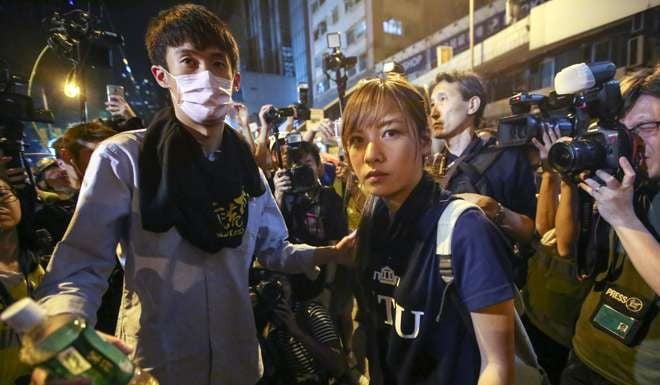
The trial on the use of pepper-ball guns comes as police have been testing alternative crowd-control measures to tear gas in the wake of the Mong Kok riot in February and the Occupy protests in 2014.
During the overnight clashes, two female inspectors were injured. One suffered an injured leg after a brick hit her.
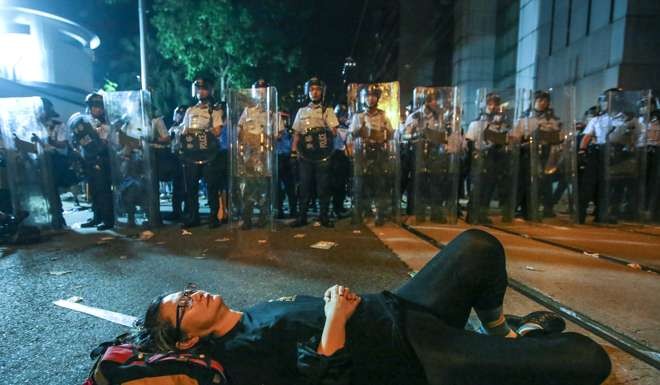
The event on Sunday began on a peaceful note, with organiser Civil Human Rights Front claiming that 13,000 people took part. Police estimated the turnout at its peak was 8,000.
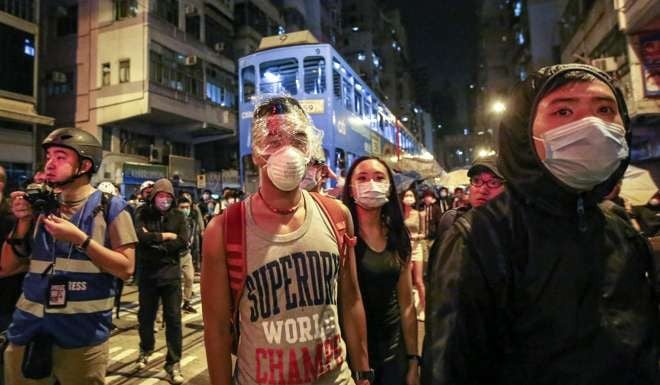
Sixtus Baggio Leung Chung-hang and Yau Wai-ching from Youngspiration, the pair at the centre of the Legco oath controversy, also attended.
Most participants, many dressed in black and some waving colonial-era flags, adhered to the originally planned route and gathered at the Court of Final Appeal for a rally. At around 6pm on Sunday, the organisers announced the end of the event.
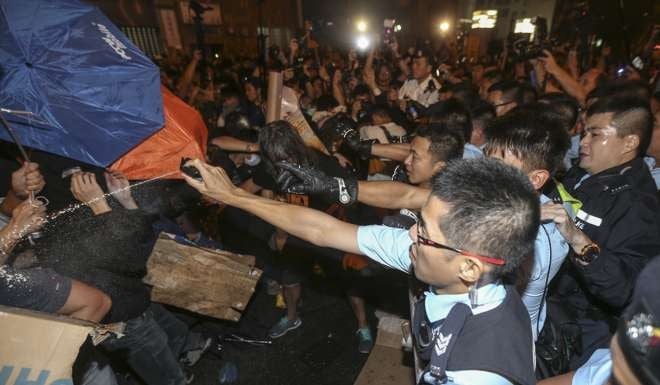
But several participating groups, including members of the Labour Party, the League of Social Democrats, Student Fight for Democracy and Demosisto, urged supporters to continue to the liaison office in Sai Wan.
The crowds urged the police to open sections of Des Voeux Road West, the major thoroughfare leading from Central to Sai Wan, to the protesters, who were confined to the pavement.
Police used batons and pepper spray multiple times to stop the protesters charging barricades near the liaison office and from occupying nearby Connaught Road West.
Many ran for cover, while others used umbrellas and protest banners as shields.
The stand-off escalated around 9pm when hundreds of protesters rushed on to Des Voeux Road West and occupied portions of it, bringing traffic there to a standstill.
Protesters began to form a dense line of umbrellas and hauled rubbish bins and metal barriers to fence themselves off from officers.
Some waved a blue banner that said “Hong Kong is not China” and shouted slogans calling for independence for the city.
A few demonstrators were seen digging out bricks from the pavement to use as weapons. Beer bottles and bricks were hurled at officers.
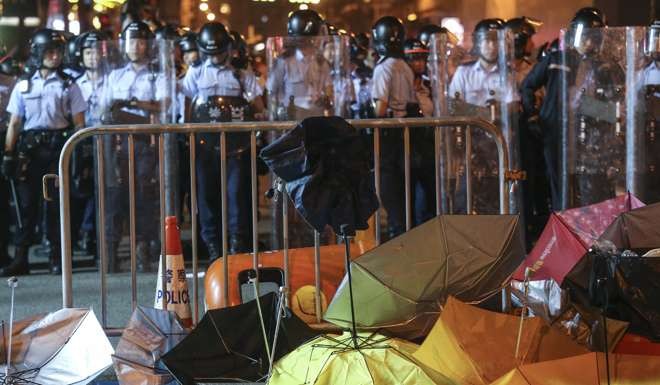
At around 10.45pm, about 400 officers were deployed to handle the protesters, with hundreds more on standby, including officers from the force’s special tactical squad.
The four organisers of the Sai Wan protest then appealed to those at the scene to leave to prevent “sacrifices”. However, several hundred remained at the site.
Police continued to call in reinforcements, bringing the total number of officers to 700 by 1am. Officers chased after demonstrators to hasten their departure.
The site was cleared and traffic resumed on Des Voeux Road West at about 3am – almost 12 hours after the start of the rally.
But in the wake of the announcement about Beijing’s interpretation of the Basic Law yesterday morning, opponents again took to the street.
The Labour Party staged a rally outside the liaison office at 4pm.
The city’s legal sector is organising a silent march today.


